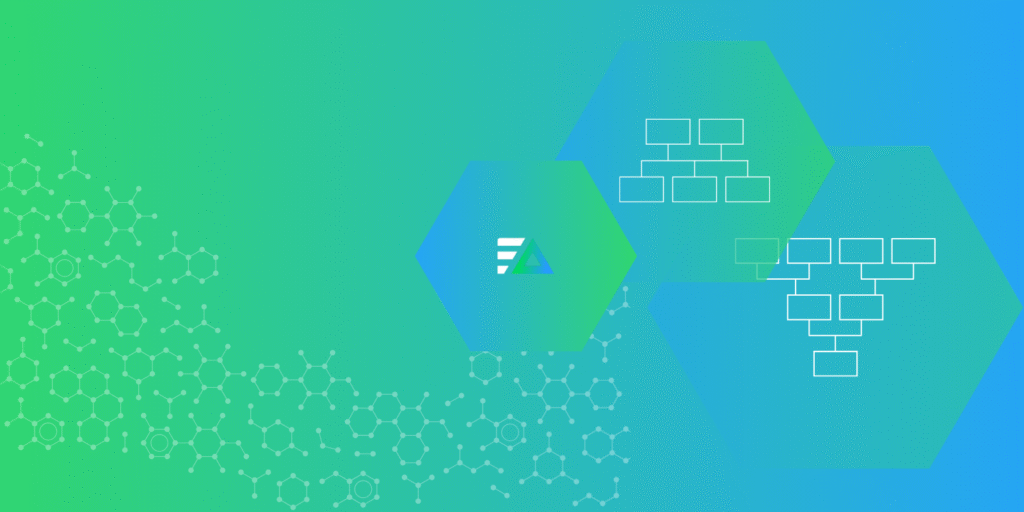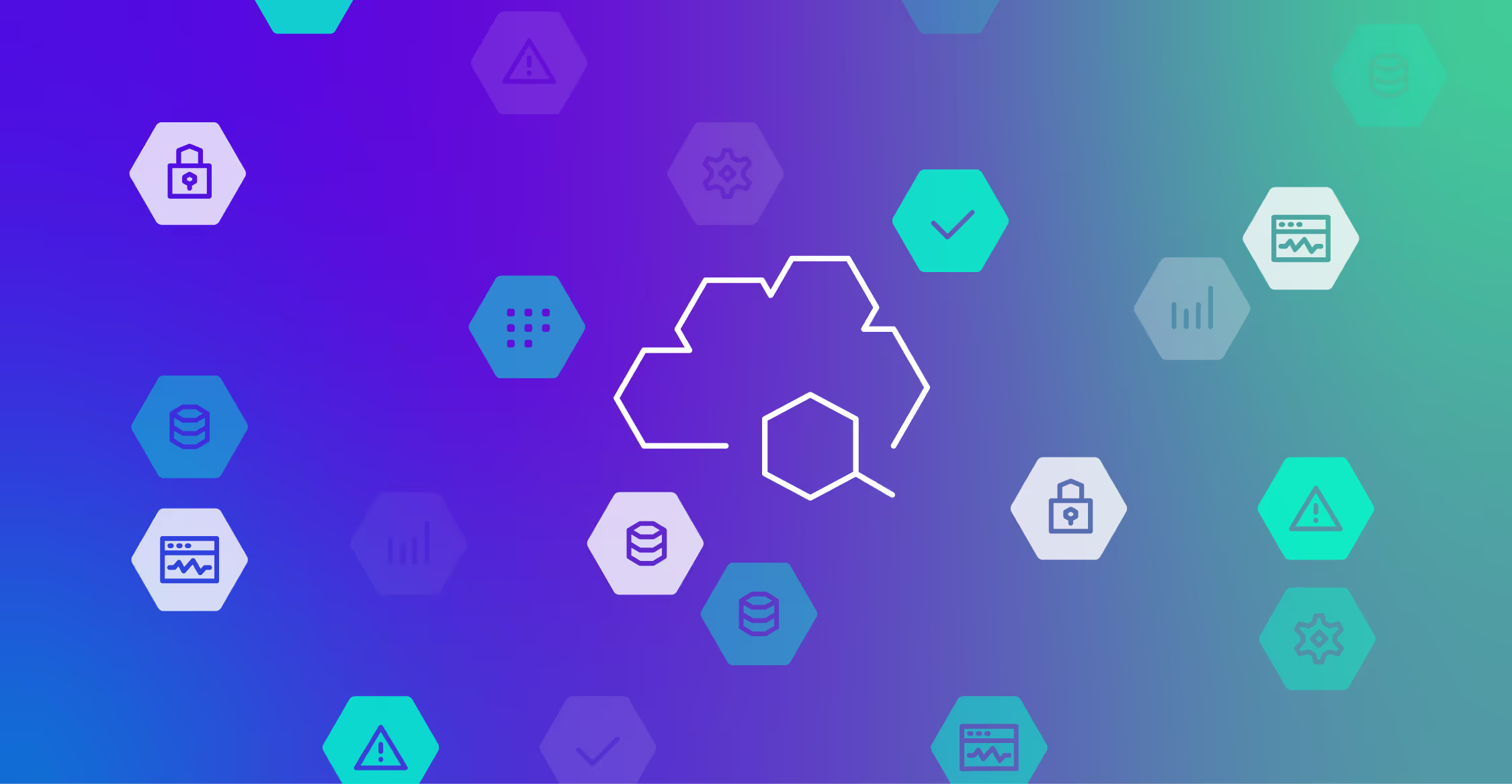Data lineage is a foundational pillar of modern observability and security strategies. As organizations process growing volumes of telemetry data, understanding where that data originates, how it moves and changes, and who uses it is essential for maintaining compliance, preserving data integrity, and performing accurate, reliable analysis.
This blog post will explore the techniques, tools, and best practices for managing and implementing an effective data lineage program. We’ll also look at how Edge Delta’s intelligent Telemetry Pipelines enhance data lineage by giving teams deeper visibility and control over how data is processed, transformed, and routed.
What Is Data Lineage?
Data lineage is the process of tracking and visualizing the flow of data as it moves through different components in a system. It shows where the data comes from, how it is transformed, and where it ultimately ends up. This includes every step of the data lifecycle, such as ingestion, processing, transformation, storage, and usage.
Think of data lineage as your data’s blueprint — offering structure, context, and clarity. With a clearly defined lineage strategy, organizations can strengthen governance, accelerate issue resolution, and make confident, data-driven decisions.
Types of Data Lineage
Depending on what you need to track, data lineage can take different forms:
- Vertical Data Lineage follows data as it moves from its source to its final destination.
- End-to-End Data Lineage provides a full picture, covering every step from creation to usage.
- Partial Data Lineage focuses on specific sections of the data’s journey.
- Cross-System Data Lineage tracks data as it moves between different platforms.
- Intra-System Data Lineage looks at data flow within a single system.
Data lineage is essential for maintaining data integrity, ensuring transparency, and supporting informed decision-making across various business functions. It can help you understand:
- Where your telemetry data originates.
- How it’s processed and transformed.
- Where it’s stored or sent, whether to tools, dashboards, or archives.
- How it’s used for monitoring, insights, or compliance checks.
Why Data Lineage Matters
A strong data lineage framework is crucial for transparency, compliance, and data integrity. By tracing data from its source to its final destination, businesses can correct errors, ensure accuracy, and build trust in their data.
In this section, we’ll take a closer look at some of the primary benefits of data lineage.
Supplying accurate information that builds confidence
In today’s business environment, good decision-making starts with trust in your data. When doubt creeps in, progress stalls — and costs rise. That’s where data lineage comes in. Mapping the journey from a dataset’s origin to its final use ensures transparency, accuracy, and authenticity. With clear visibility into how data is created and transformed, companies can move forward confidently, knowing their decisions rest on a solid foundation.
Offering clear data tracking that makes compliance and auditing effortless
Businesses must comply with regulations like GDPR, HIPAA, and SOX, all of which require clear records of how data is handled. Data lineage simplifies compliance by tracking data at every stage, making it easy to demonstrate regulatory adherence as needed.
Ensuring transparency to strengthen data governance
Data lineage serves as a vital audit trail, ensuring integrity and compliance. By tracking how data moves and transforms, organizations can enhance governance, uphold accuracy, and maintain consistency and security across their data operations.
Speeding up troubleshooting and root-cause analysis
When data quality issues occur, identifying their cause can be difficult without clear visibility into how data moves and transforms. Data lineage maps where and how data changes, helping organizations quickly identify and resolve errors by:
- Detecting inconsistencies in data transformations and sampling.
- Reducing downtime by tracing errors to their source.
- Enhancing operational efficiency by improving data reliability.
Why Lineage Matters for Governance
Data lineage is vital for governance as it ensures regulatory compliance, enhances data quality and trust, and mitigates risks by providing transparency into data flows and transformations.
- Regulatory Compliance: Ensures that sensitive data is properly handled according to laws such as GDPR, HIPAA, and PCI-DSS.
- Data Quality and Trust: Enables analysts and business users to rely on data insights by providing visibility into data sourcing and transformations.
- Risk Management: Helps identify the origin of anomalies or errors, reducing mitigation time and preventing data corruption.
By leveraging data lineage, businesses can ensure data integrity, streamline compliance, and optimize decision-making, all while reducing risks and inefficiencies.
Data Lineage Tools and Software
Effective data lineage requires the right tools to track and visualize how data moves across systems. These tools provide transparency, support compliance efforts, and enhance overall data governance.
Traditional Solutions
Organizations rely on specialized tools to track and analyze how data moves, helping to ensure its accuracy and compliance.
| Category | Tools | Description | Benefit |
| Metadata Management Platforms | Collibra, Alation, Informatica, EDC | Creates data catalogs and lineage graphs | Provides full visibility into data sources, transformations, and consumption, improving data governance |
| ETL/ELT Tools | Talend, Dbt. Apache. NiFi | Tracks how data is transformed and moved | Ensures complete traceability and maintains consistency across data pipelines, improving data integrity |
Edge Delta’s Telemetry Pipelines take data lineage to the next level by shifting observability to the edge — allowing teams to filter, transform, enrich, and mask data in flight, all while maintaining end-to-end visibility as it moves from any source to any destination.
How to Implement Data Lineage
Implementing effective data lineage requires a structured approach to documenting transformations, tracking data flow, and meeting compliance standards.
In this section, we’ll review five key implementation steps in detail.
Step 1: Identify Critical Data Streams
Not all data carries the same weight. Start by prioritizing the logs, metrics, and traces that matter most — especially those tied to compliance, analytics, or key decision-making — so teams can focus their attention where it counts and avoid getting bogged down in low-value datasets.
Edge Delta’s Telemetry Pipelines give teams the flexibility to route data from any source to any destination. This makes it easy to implement a data tiering strategy — sending data to different destinations based on its importance — so the right data ends up in the right place at the right time.
Step 2: Create a Transparent Data Flow
A transparent data flow means having clear visibility into how data moves through your pipeline — from ingestion and transformation to storage and analysis. It involves tracking every change to the data and maintaining a detailed history of pipeline modifications, enabling easy auditing or rollback when necessary.
Edge Delta’s Live Capture feature takes this transparency further by offering real-time insight into how each processing step transforms your data. This live view into data streams reduces confusion and ambiguity, providing a single source of truth for how data evolves while it’s in flight. It also lets teams thoroughly test their processing changes before deployment, ensuring confidence in their effectiveness.
Step 3: Incorporate Metadata and Versioning
Adding metadata to logs, metrics, and traces — such as environment, host name, and port — improves traceability and provides valuable context during troubleshooting. Version control simplifies audits by allowing teams to track historical changes over time.
Edge Delta enriches telemetry data in real time by automatically attaching contextual metadata through configurable processors. Teams get granular control over which metadata is applied to each data stream — ensuring they get the context they need without incurring costs for storing unnecessary data points.
Edge Delta also supports versioning of pipeline configurations, making it easy to track changes and conduct audits.
Step 4: Operationalize Lineage with Automated Monitoring and Validation
Once your data lineage is in place, it’s critical to keep it accurate and up to date. Data pipelines are dynamic — schemas evolve, dependencies shift, and new sources come online. Without continuous validation, lineage diagrams can quickly become outdated or misleading.
Automated monitoring helps ensure your lineage reflects reality. Real-time anomaly detection can surface unusual data patterns or spikes that may signal breaks in your data flow. Automated alerts can notify teams of pipeline failures, misconfigurations, or unexpected changes — so issues can be addressed before they affect downstream services or end-users.
By embedding these controls into your pipeline, you not only maintain the accuracy of your lineage over time, but also strengthen data integrity and trust at scale — without relying on tedious manual checks.
Step 5: Provide Mechanisms for Reporting and Auditing
A strong data lineage strategy includes automated reporting tools that continuously monitor data flow, transformations, and compliance status. These reports offer stakeholders full visibility into how data moves and changes across systems, supporting transparency and accountability.
Governance teams benefit from intuitive dashboards that provide real-time oversight of data pipelines, while compliance teams rely on detailed lineage reports to demonstrate adherence to regulations. Together, these tools streamline audits, reduce risk, and build trust in data-driven decisions.
Six Best Practices for Effective Data Lineage
In this section, we’ll explore six best practices that will help ensure your data lineage strategy remains effective over time.
- Establish Transparent Documentation. Use flowcharts and lineage diagrams to clearly visualize how data moves and transforms across systems. These visuals simplify complex workflows, improving understanding and analysis for teams and stakeholders.
- Automate Real-Time Monitoring. Leverage AI-powered tools to automate lineage tracking and keep records up to date, minimizing manual errors and enabling proactive issue detection to preserve data integrity.
- Audit Changes with Version Control. Maintain detailed version histories of data and pipeline changes, allowing easy auditing and the ability to revert to previous states when necessary.
- Prioritize Data Quality. Perform regular integrity checks and use anomaly detection proactively to identify and address data issues before they affect decision-making.
- Enforce Strict Access Control. Apply role-based access and encryption to restrict data and pipeline modifications, ensuring only authorized personnel can make changes.
- Monitor Data in Real Time. In fast-moving environments, maintain continuous visibility into data flow and lineage to detect and resolve issues immediately, keeping information accurate and actionable.
These best practices can help you create a clear, reliable data lineage strategy that strengthens governance and enhances decision-making.
Real-World Use Case: Regulatory Compliance
In highly regulated industries like finance, healthcare, and insurance, maintaining compliance with standards such as SOC 2, GDPR, HIPAA, and PCI DSS is non-negotiable. These frameworks require organizations to demonstrate tight control over how sensitive data is collected, processed, stored, and accessed.
A robust data lineage strategy plays a central role in meeting these requirements. By mapping how data flows through systems — across ingestion, transformation, enrichment, storage, and deletion — teams gain a clear, end-to-end view of where sensitive information lives and how it’s handled. This transparency is essential for:
- Audit readiness: Auditors often require proof of how data is processed and which systems or teams have touched it. Lineage provides a clear, verifiable trail.
- Data subject access requests (DSARs): Under regulations like GDPR, organizations must quickly identify and act on user data. Lineage helps trace personal data across systems for faster, more accurate responses.
- Risk mitigation: When a breach or incident occurs, lineage helps pinpoint which systems were involved and what downstream data may have been exposed.
- Policy enforcement: Lineage helps ensure that data handling policies (e.g., masking, retention, access controls) are applied consistently across the pipeline.
Without lineage, compliance efforts often rely on spreadsheets, tribal knowledge, or outdated diagrams — leaving organizations exposed to audit failures and regulatory penalties.
Solution: How to Manage Your Sensitive Data with Edge Delta
Here are three ways Edge Delta supports sensitive data protection:
- Masking PII at Ingestion: Edge Delta enables you to identify and mask personally identifiable information (PII) right as data enters the pipeline, ensuring sensitive data never leaves your environment.
- Routing Data to Encrypted Storage: Sensitive data can be routed to encrypted storage locations, protecting it from unauthorized access throughout its lifecycle.
- Providing Full Visibility with Historical Context: Edge Delta provides real-time visibility and control over how data is processed — such as where masking, filtering, or enrichment occurs. With support for versioned configurations, teams can look back to understand how data was handled at a given point in time. This helps maintain traceability and supports compliance efforts.
Edge Delta’s Impact on Data Lineage
Edge Delta extends traditional data lineage frameworks by providing teams with comprehensive control and visibility over how data is processed, transformed, enriched, masked, and routed.
By processing and analyzing logs, metrics, and traces in real time — as data is generated — Edge Delta delivers immediate insight into data flows without the need to first send data to a legacy observability platform.
Edge Delta supports flexible data routing from any source to any destination, including legacy observability platforms, SIEMs, and object storage solutions. Additionally, it natively integrates open standards such as OpenTelemetry and OCSF, ensuring data is consistently structured for improved analysis and governance.
Ultimately, Edge Delta’s Telemetry Pipelines support data lineage by giving organizations more control and insight into data movement and transformations — enhancing governance, accelerating incident response, and supporting better decision-making.
Final Thoughts
Data lineage provides a clear map of where data originates, how it flows, and how it transforms across complex systems. By understanding this full journey, organizations can ensure data accuracy, maintain compliance, and enable confident decision-making.
At its core, data lineage is about transparency and control — giving teams the visibility they need to track data from source to destination and understand the impact of every change along the way.
Edge Delta enhances data lineage efforts by delivering deep visibility into how data flows between sources and destinations. By making it easier to capture and understand data movement and transformations, Edge Delta helps organizations strengthen governance, improve operational efficiency, and unlock the full potential of their data.
FAQs on Data Lineage
What are the challenges of data lineage?
Common challenges include managing complex environments, ensuring data consistency, scaling effectively, and working cross-functionally with other teams.
How do data lineage tools work?
These tools capture metadata to track data movement, transformations, and dependencies, providing a clear view of data flow for better management and compliance.
What are the two types of data lineage?
Business lineage focuses on data from a business perspective, while technical lineage maps the systems, processes, and transformations that data goes through.






